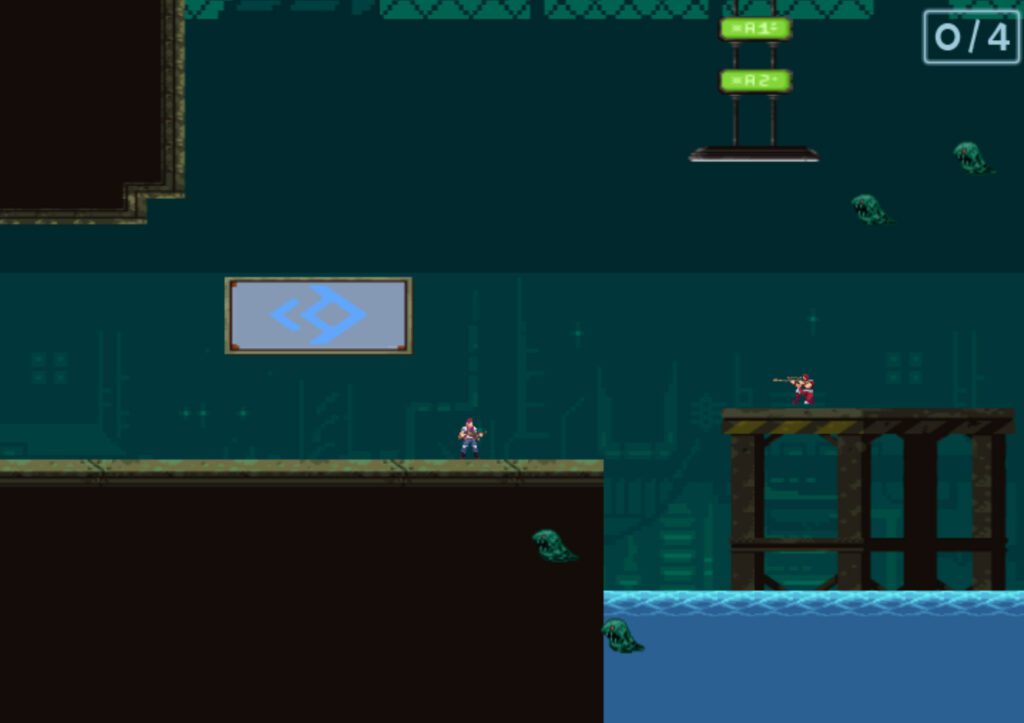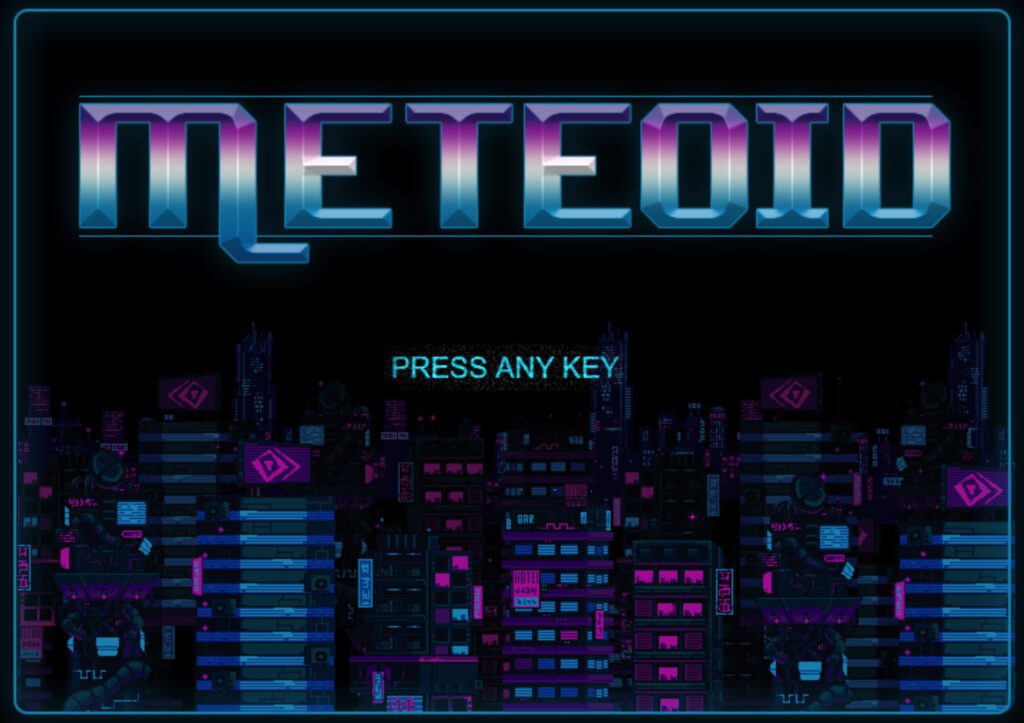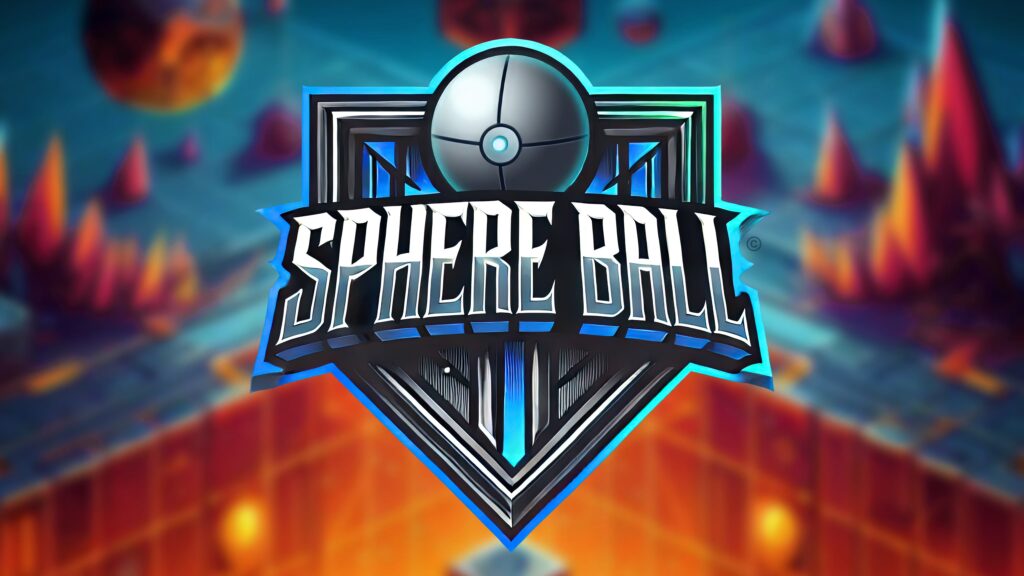We’re in 2021. After learning the basics of GDevelop, I started working on an action platformer, somewhere between Contra and Metroid. My friends call me Meteo, so I chose the title Meteoid.
I used sprites and background tilesets I found online, just to experiment. It was nothing more than a single level, with enemies spawning from every direction and an insanely high difficulty level. But I’m used to old-school games, and for me, the idea of making something easy is almost unacceptable.


Endless work
If there’s one thing I knew for sure, it’s that making a game takes a long time and involves endless work. I would never have started a new project if it was impossible to finish.
On top of that, I’m not an illustrator. I’m experienced with digital graphics and know software like Photoshop very well, but when it comes to Illustrator or drawing with a pencil, I’m a complete disaster. Creating a game without solid graphics would have been too big a problem to handle.
A simple game without graphics
Let’s break it down: I needed a game that was easy to program, required minimal graphics, and could appeal to just about anyone. The clearest example is Tetris. But it’s not easy to create something completely new—there are millions of games out there, often unknown, made all over the world.
If there’s one thing I do well, it’s predicting problems and not just following my own interests blindly. So I decided to study: I downloaded games that I normally can’t stand, like Match-3 games, and started asking myself questions that still serve as solid foundations for game development.
Uncomfortable questions about gameplay
I didn’t focus on gameplay itself but on secondary aspects:
- How do people hold their phones?
- Which finger is best to play with?
- How tiring is it to play on a phone in landscape mode versus portrait mode?
- What actions do players prefer—pressing buttons or swiping?
- And how short should a swipe be to feel acceptable (and vice versa)?
These questions led me to a big discovery: in most popular games with millions of players… you don’t actually play! Almost nothing happens! Let me explain:
In Tetris, you need to watch the pieces already on the ground, the ones coming next, and the ones currently falling. You have to rotate and move them, sometimes accelerating the fall. These are all complex operations… but none of this happens in Match-3 games!
Laziness: The first rule of successful puzzle games
The player looks at the screen, searching for matches between objects. When they find them, they make a swipe between adjacent sprites—the shortest swipe possible. There’s no need to drag a finger across the screen or do it with incredible speed.
Match-3 games teach us that the first feature of successful puzzle games in recent years is… laziness! You relax by looking at the screen and occasionally perform the simplest gesture possible (aside from a single tap).
This way, players don’t get tired and can enjoy longer gaming sessions. Meanwhile, they might answer friends on WhatsApp or watch a bit of TV.
If the player doesn’t play, the screen explodes!
And here comes the second big discovery. If Match-3 games are “non-games,” where human interaction is minimal, then the screen itself compensates by showing as much action as possible—sometimes even too much.
What does that mean? I watched some popular games on YouTube and couldn’t understand certain dynamics. So I slowed the videos down to 0.2x speed. Some of the combos were exaggerated, unpredictable, and just plain chaotic.
Whoever designed them must have studied player behavior extensively. The goal is to constantly reward the player, convincing them they’ve done something amazing just by touching the screen. Making them believe that the brief swipe caused all those explosions and points.
The magic formula of successful puzzle games
And here’s the magic formula behind many successful puzzle games:
- The player doesn’t really play—they just look at the screen and think.
- When they find a solution, they make a swipe.
- The swipe is as short as possible.
- The screen then fills with quick combos, making the player feel like they’ve performed an impressive action.
Up to the third point, I completely agree: anyone using a phone might struggle with complex controls. But for me, that fourth point feels like cheating, so I immediately crossed it off my task list.
All I needed was an idea
I had learned some very important information, and it was time to face the biggest challenge: creating something simple, fun, and suitable for everyone—something that respected the first three rules of Match-3 games and still felt innovative.
All I needed was an idea. Just one idea.
To be continued…
SPHEREBALL – Play for Free Now!
https://play.google.com/store/apps/details?id=com.sphereball.saiber


